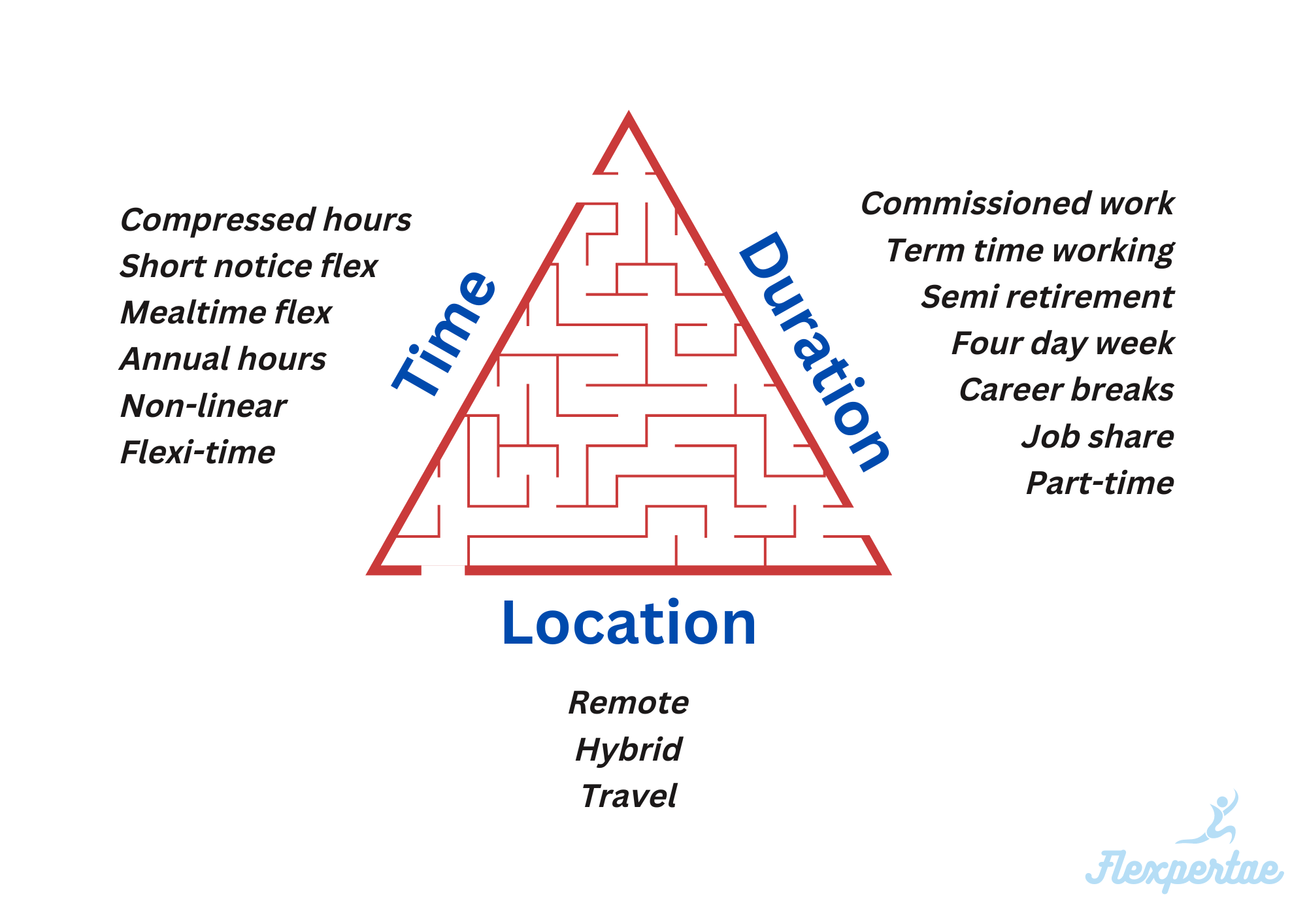What is Flexible Working?
Definition: Flexible working is a term covering a range of working arrangements which allow flexibility on working practices around time, location, and duration.
It flexes based on three variables:
- Time
- Location
- Duration

A fixed total number of hours to be worked over the year, with variations throughout the year in terms of working day/week duration. Employees may not have a choice on working patterns.
Extended periods of unpaid leave or not being in work eg sabbaticals, mental health breaks, career breaks.
No fixed hours, you work towards output targets.
Includes freelancing and contract opportunities.
Compressed working week(s). Working the fulltime number of hours fitted into fewer days
and longer hours on those days based on mutually agreed preference.
For example
you might work 10 hour a day for four days and take the fifth day off. Alternatively you
may work a nine day
fortnight, where theywork 80 hours over nine days and take thethenth day off.
Also know as flexi-time where you are able to choose what time to start and end work, usually around set core hours.
Working a four day week instead of five days, whilst retaining the full salary and productivity. This applies the 100 : 80 : 100 rule. 100% salary, 80% time, 100% productivity.
A combination of remote and office based working eg 2 days week in the office and 3 days working from home.
Where two or more people share the responsibility for a job, thus each person works part-time.
Where you choose when you take your lunch break.
Allows- You to move your lunch break to attend appointments without using time off
- You can take a shorter break and leave work early having made up your hours.
This is usually a more informal arrangement.
Where you create work schedules working asynchronously, completing tasks in flexible, focused bursts throughout the day.
Anything less than what the company defines as full time work. Full time for many is 5 days a week.
Working at a location which is remote from the employer’s office/workplace.
An agreed work pattern in the lead up to full retirement which allows the employee to ease into retirement by reducing or changing aspects of the role.
Options include moving to fewer hours or a role with reduced responsibility.
Where you have short-notice absences, and then "repay" the lost time later by making up the required number of working hours.
This is usually a more informal arrangement.
Working regular hours and days during term time, with flexibility during school holidays.